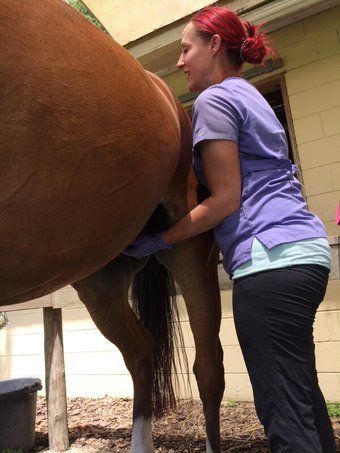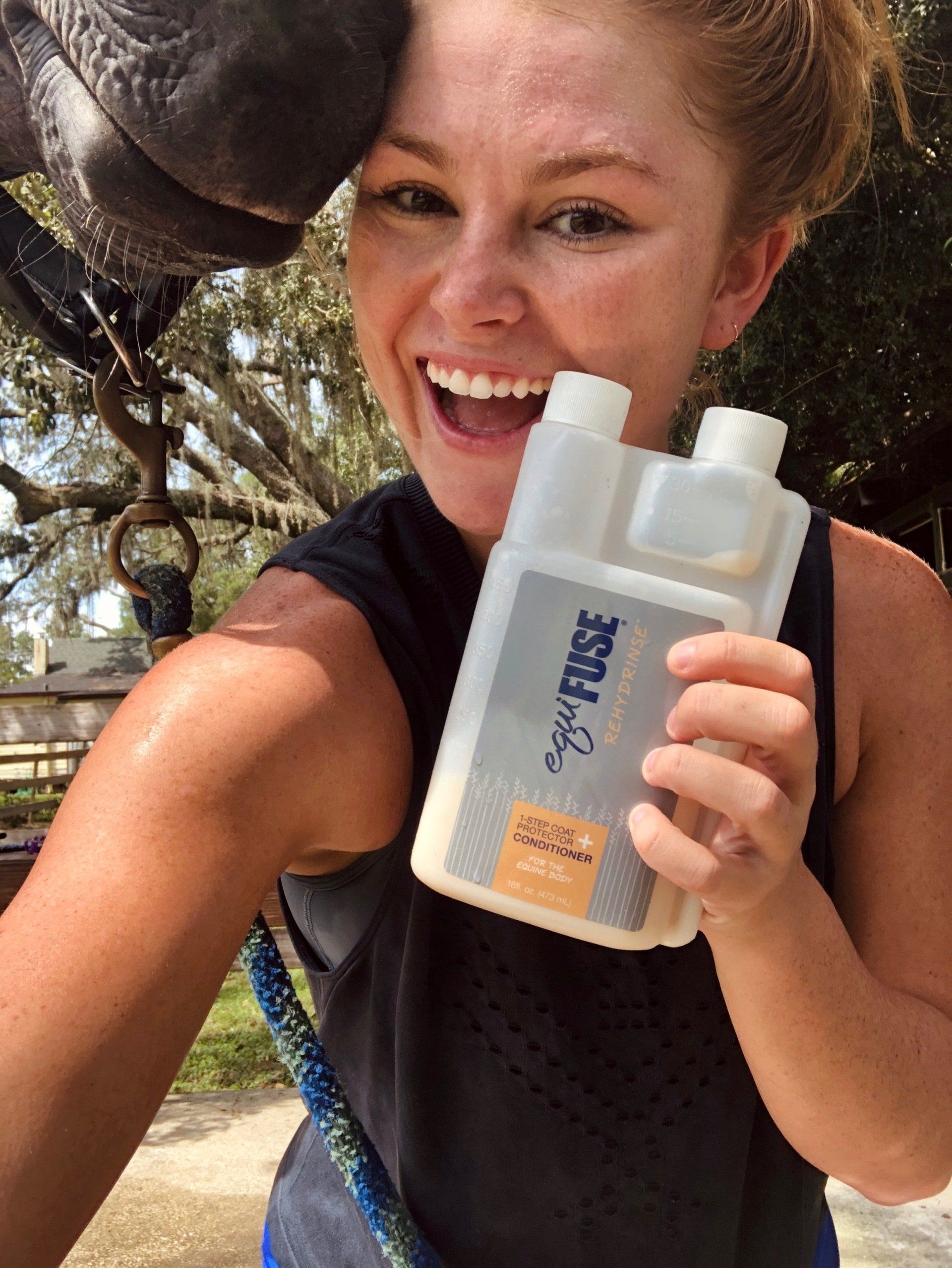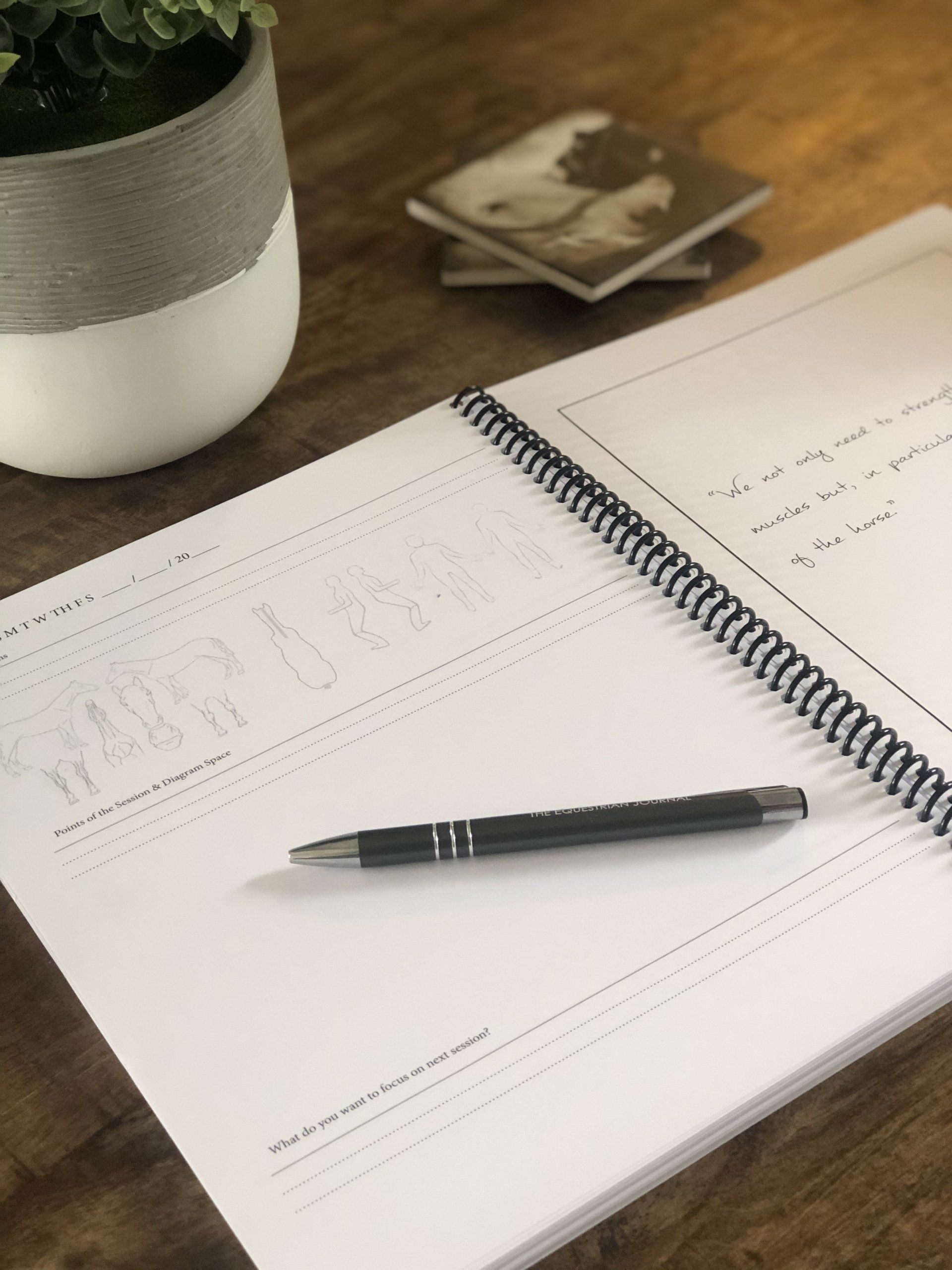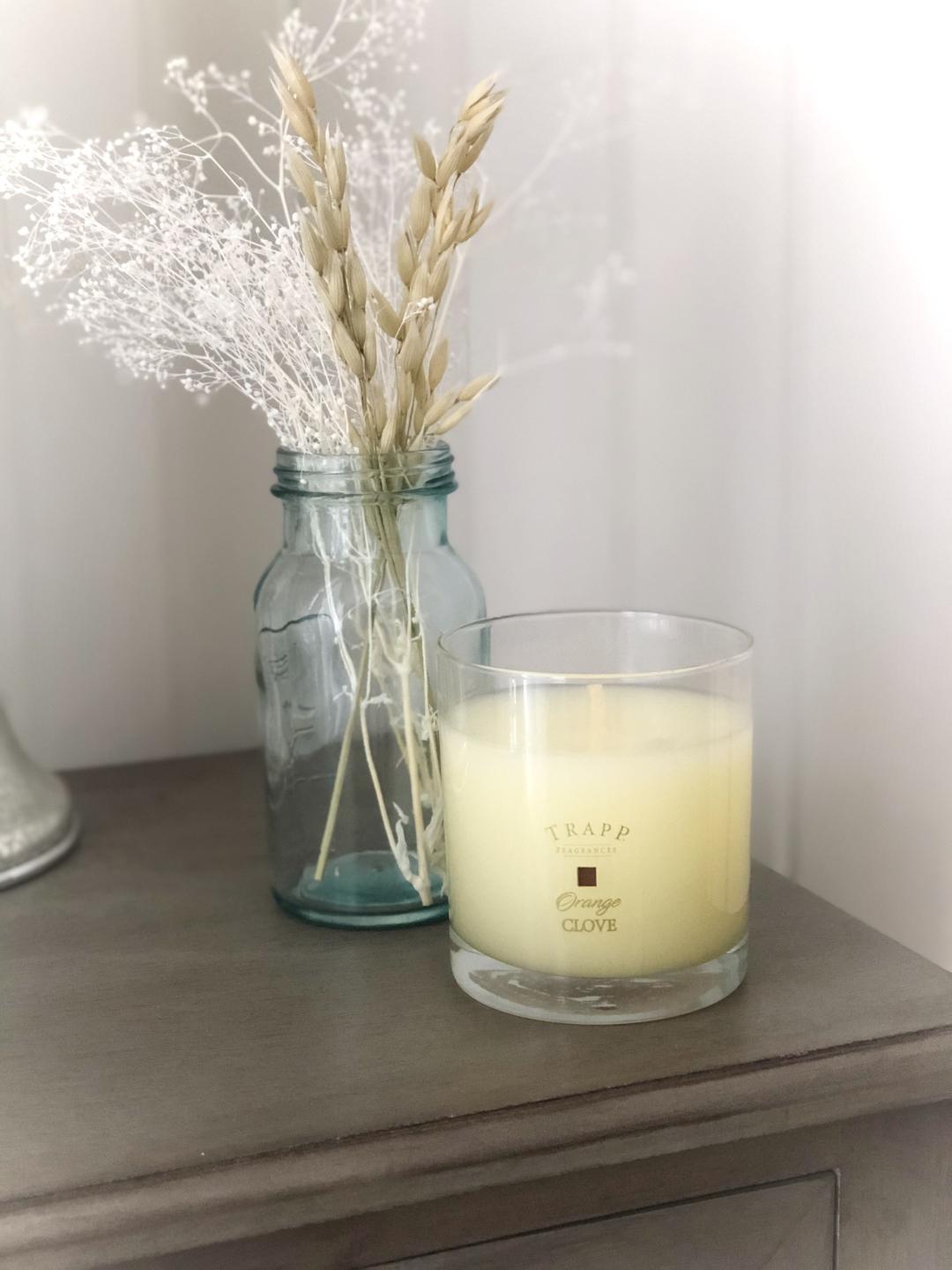In Search of The Bean
This is no Grimm's Fairy Tale!!!
No, this isn't your basic Jack and The Beanstalk story although searching for "the bean" could easily become a new Grimm's Fairy Tale.
Several years ago, I attempted to extract “the bean” from my horse’s sheath. I was familiar with using various products to soften and loosen smegma but had never attempted to find the elusive bean. I wasn’t even quite sure where or what it was. After reading a few articles, I thought I might attempt this act of bravery armed with my own Excaliber. I knew that it was an unpleasant task but required of me if I was to be considered a “Good” horse mom.
One day, Veda was slightly sedated as a rehab precaution and had dropped down while in the wash rack. I donned my rubber gloves and Excaliber sheath cleaner. I followed the directions and allowed the product to sit on him a few minutes. Then, I reached down, grasped his penis and proceeded to search for the bean. To my surprise, I could actually see it at the tip of his penis. I squeezed gently and it popped out. Just like that!
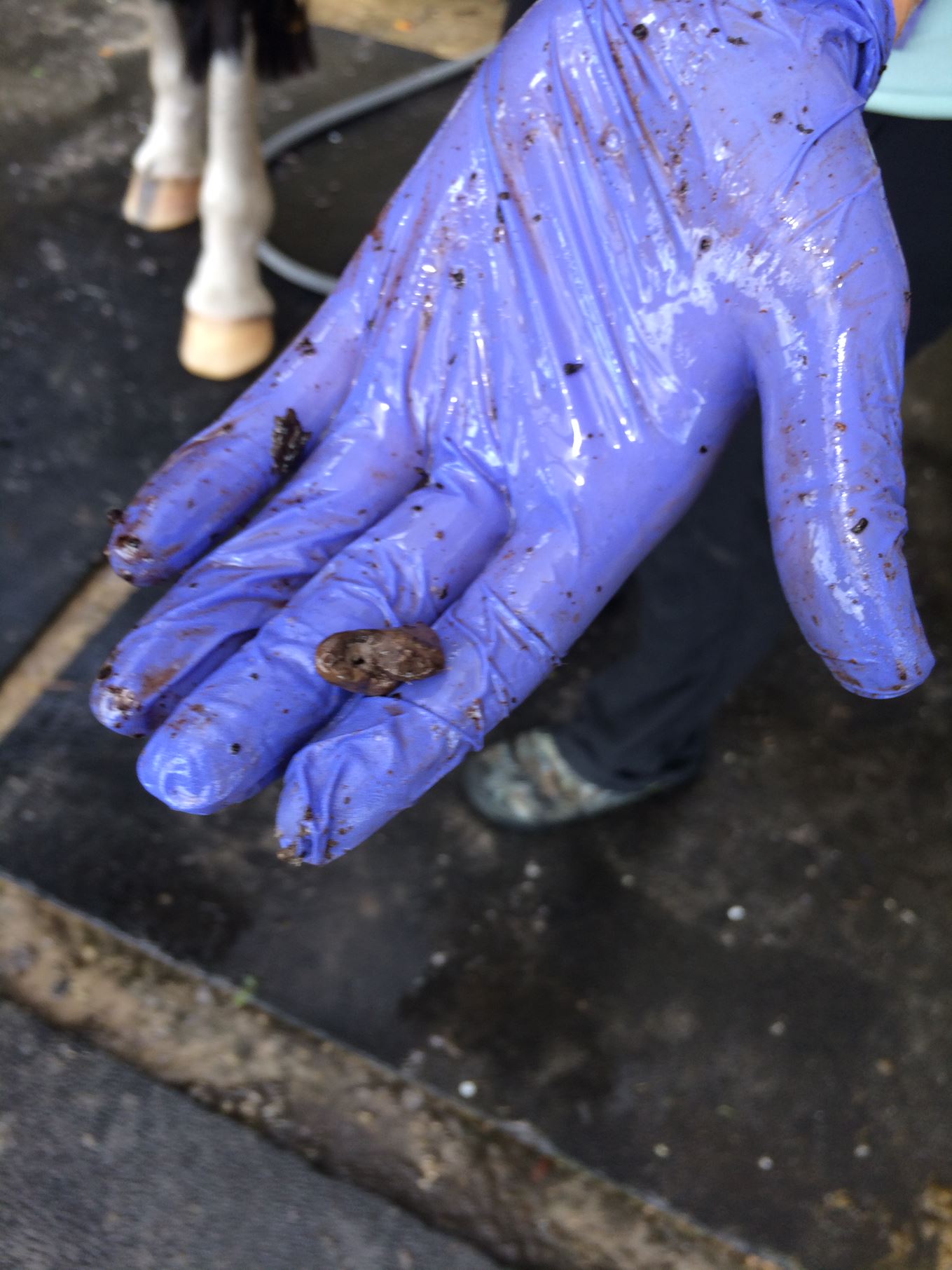
There were a few “real” horse women around me and I proudly showed them my prize!!!!!
I was shocked to find that they had never seen a bean before. On top of that, they didn’t know where it was either. As it turns out, they, like me, though that the clumps of smegma that could be pulled out with your fingertips were unformed beans.
At the time, I was always concerned that some of the cleaning product might be left up inside my horse when I was done. I wasn’t sure if that was harmful, but it certainly couldn’t be a healthy thing to do. I’m one of those owners who doesn’t use soap on their horse every time I wash them. I know that disrupting the natural skin barrier of our horses can lead to unwanted repercussions like scurf, dry skin and excessive itching. So, leaving a cleaning product inside a very private place seemed dicey.
This article from Ben Espy, DVM,DACT (printed with permission) reflects current myths I hear around the barn.
Question: I just bought my first horse—a gelding. My fellow barn mates tell me that I need to clean his sheath several times a year. Do I really need to do that, and, if so, how?
A. Contrary to popular belief, cleaning a horse’s penis and the sheath containing it (the prepuce) is rarely necessary. In fact, the aggressive cleaning methods promoted by many well-meaning horse people often do more harm than good.
Here are some myths commonly used to justify this practice:
Myth #1: Accumulation on the penis is dirty and unhygienic. This is a typical anthropomorphic assumption that male horses have the same hygienic needs as male humans. As with most things we do to horses to make them align better with our lifestyles, we’d be better off letting horses be horses. When a stallion or gelding extends or “lets down” his penis, the accumulation you see on it is smegma, not dirt. This material is continually secreted from the penis for a very specific purpose: It provides lubrication and a protective covering for the penis.
Some horses produce dry, flaky smegma, while others produce moist, goopy smegma. Both are perfectly normal. The amount produced varies widely among individuals. For example, horses with white pigmentation on their penises seem to produce more smegma than horses with dark penises. Excessive smegma accumulation is extremely rare and usually associated with skin conditions or lesions, like herpesvirus or squamous cell carcinoma—a common tumor found on the penis—that need to be diagnosed by your veterinarian.
Myth #2: All male horses require routine sheath cleaning. The best proof that sheath cleaning is completely unnecessary is the reproductive health of stallions observed in the wild. These horses, who obviously have never had their sheaths cleaned, have documented conception rates approaching 85 percent. Domestic stallions, on the other hand, who do frequently have their sheaths cleaned—sometimes as often as three to four times a day—often average only a 70 percent conception rate.
Some instances in which sheath cleaning may be medically recommended are when a horse has suffered a laceration in the area, has undergone surgery to remove a cancerous growth, has a skin condition from equine herpesvirus or has squamous cell carcinoma.
Myth #3: Swelling in the sheath and tail rubbing are signs that a horse’s sheath needs cleaning. When a sheath swells, it has nothing to do with the accumulation of smegma inside it. -Because of its location on the underside of the horse, it is simply a natural low point where excess fluid is drawn by the force of gravity. For example, an older horse with low protein levels in his blood or liver disease may experience fluid buildup, called edema or pitting edema—swelling that holds a depression when you press into it with your thumb—in the sheath area without exhibiting any other clinical signs. In such cases, the swelling likely will disappear if the horse is turned out or exercised, just as it would from the legs of a horse who stocks up when stalled for long periods of time.
Another common cause of sheath swelling is parasites. Parasites also make horses’ tails itchy. So, if you notice your horse rubbing his tail and he has a swollen sheath, the latter condition isn’t causing the former. Both can be cured by deworming with an ivermectin-containing product.
Myth #4: An unusually large smegma “bean” can block a horse’s urethra. Smegma can accumulate in the depression at the end of the penis, called the urethral fossa. Commonly known as the “bean,” this smegma plug can vary from about the size of a small eraser to a lima bean. When male horses stand “camped out”—with their hind legs stretched behind them and their backs hunched in an uncomfortable-looking stance—some people worry that they’re having trouble urinating. But the force of a horse’s urine stream is far too strong to be inhibited by any amount of smegma. In fact, the “camped-out” stance is usually a sign of abdominal pain caused, for example, by ulcers or colic.
Not only is sheath cleaning unnecessary, but it can also often be harmful. The traditional method of poking a hose up into the sheath and scrubbing it and the penis with sponges and antibacterial soap removes the natural protective covering and healthy bacteria population, potentially causing micro abrasions and sores.
If you feel absolutely compelled to clean your horse’s penis for cosmetic reasons before a show, follow a quick, efficient, soap-free procedure. To encourage him to let down for cleaning, try bathing him on a warm, sunny day. Then stand by his front legs to avoid getting stepped on if he sidesteps during the process. Wearing disposable gloves, gently grasp the end of his penis with one hand and run the other hand up the shaft, knocking off the smegma. You should be able to clean the penis adequately this way without using water. If necessary, though, you can run a small stream of warm water over the penis—but avoid scrubbing with towels or sponges. Then pat the penis dry with paper towels.
If your horse doesn’t relax enough to let down or refuses to stand still for the procedure, don’t resort to more forceful restraints, such as a twitch. This will just stimulate his fear mechanism, making it harder to clean his sheath in the future. Instead, ask your veterinarian to sedate him and perform the cleaning for you.
Expect whatever cleaning you do to be short-lived. Normal smegma production will restore the accumulation to your horse’s regular level within about a week.
In today’s environment, we try very hard to consider the complete welfare of our horses. This very traditional inclusion of sheath cleaning in our normal routines should be carefully considered based on each individual animal. You know…what’s good for the goose may not be good for the gander!
And speaking of that, don’t forget that our mares need attention as well. Although they do not produce smegma per say they do tend to accumulate dirt, sweat and dead cells in-between their teats. TEVA tells us that this accumulation can become flaky, itchy, and a place for bad bacteria to fester. You can use the same safe and gentle smegma removing formulas to soften and remove debris between the teats.
Keep in mind that you are dealing with a sensitive area on a sensitive animal. Don’t be afraid to leverage your veterinarian and farm professional if necessary. Protocols for handling your horse, effective sanitation and proper procedures are critical for the health and welfare of you both. There are also smegma removing professionals that are wonderful at cleaning your horse. Here in Florida, we have Stefanie from Stud Crud Busters who is gentle, professional and doesn't use (or need) sedation.
New Paragraph

